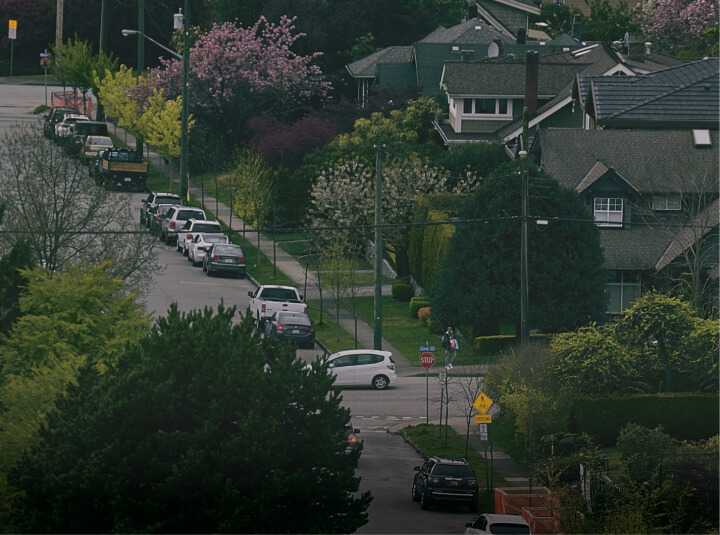interested in other markets?
Alongside the Vancouver edition of the rennie landscape, our intelligence group also produces editions for the Victoria and Kelowna markets. Read them at the links below.
table of contents
05. housing
finishing strong, starting weak
King County has undergone a residential construction boom over the past few decades, particularly in the multi-family segment. On an annual basis, completions for sites with five or more units rose from an average of 4,800 per year between 2000-2010 to an average of 8,700 in the following decade, an increase of 81%. Since then, this completion rate has only continued to climb, nearly doubling again in just four years with over 16,000 new developments hitting the market in 2024.
Some of this reflects the rising population and demand in Washington, which, as explored earlier, has been supported by international migration. But it also reflects the highly speculative climate of 2021-2022, when housing permits issued hit a near all-time high. During this time, home prices were seeing record appreciation and borrowing costs were low, spurring a surge in construction activity.
But in recent years, new permits haven't followed the same trajectory. Permits issued are down 39% since 2020, while completions are up 25% over the same period. Builders are now focused on selling completed homes, which are taking longer to absorb given slower sales activity. A recent report from Redfin found that 28% of single-family homes for sale in the US were new construction in Q3 2024, up from 17% in Q3 2019.
New permits issued are highly predictive of how much new housing stock will arrive in the near future. After all, every new home must go through the permitting process and show up in the data before a shovel can hit the ground. This means that we can expect the completion rate to drop quickly in the coming years as new construction slows, which will help keep prices firm as it limits the stock of available homes.
Building permits and completions in Washington have rarely seen divergence, and certainly not as big as we’re seeing now. We can forecast significantly fewer housing completions in coming years as a result.
ALL PERMITTED OUT
DATA: PERMITS ISSUED AND COMPLETIONS FOR DEVELOPMENTS WITH FIVE OR MORE UNITS, KING COUNTY
SOURCE: WASHINGTON STATE OFFICE OF FINANCIAL MANAGEMENT
the new landlords don’t live upstairs
For better or worse, the composition of available rental homes in Washington has shifted over the years towards larger, multi-family buildings.
In the previous section, we looked at the recent rise in residential construction activity, which has expanded the stock of available housing. But this surge has not been uniform across product types, particularly amongst rental completions.
In recent years, Seattle’s rental stock has shifted towards larger multi-family developments, rather than smaller “mom and pop” rental homes. Per a recent report commissioned by the city council, there were just under 30,000 registered rental properties that had one to four units (think basement suites or non-institutional duplex/quadplex investments) in 2024, which was a 22% decline from the available stock since 2020.
At the same time, the number of large rental developments with 200+ units has surged, rising 55% over the same period. Part of this ongoing divergence is due to densification and urbanization, but it also reflects a pull-back from the investor class. For many non-institutional landlords, higher mortgage rates and rising expenses have pushed cash flow untenably into the red. And if these trends persist, small-scale rentals are on track to become the segment with the smallest number of homes in the market.
LANDLORDS GO BIG OR GO HOME
DATA: CHANGE IN RENTAL STOCK BY UNIT COUNT, 2020-2024, TOTAL RENTAL STOCK BY UNIT COUNT, 2024, CITY OF SEATTLE
SOURCE: SEATTLE DEPARTMENT OF CONSTRUCTION AND INSPECTIONS: 2023 RENTAL REGISTRATION AND INSPECTION ORDINANCE ANNUAL REPORT
(housing) catch-22
More than ever, it seems that a prerequisite for purchasing a house is already owning one. Today’s buyer pool is increasingly composed of existing homeowners.
There’s a bit of irony developing in the typical buyer profile today. A growing share of purchases are being made by those who already own a home and are moving up, down, or just across the housing ladder.
Prior to 2015, renters and owners entered the market in near equal measure, with the balance between them holding firm at 45% each for much of the decade. That divide began to grow in the years after, and has accelerated in recent times. Today, 61 out of every 100 buyers previously owned a home, while only 27 were previously renters.
These numbers align with other recent data from the National Association of Realtors, which found that the share of first-time home buyers has fallen to a new low of 24%, while the median age of all homebuyers has seen a sharp rise from 45 to 56 in just the past three years.
OWNERS ONLY NEED APPLY
SOURCE: NATIONAL ASSOCIATION OF REALTORS
DATA: SHARE OF PURCHASERS WHO PREVIOUSLY RENTED VS PREVIOUSLY OWNED A HOME, 2005-2024, UNITED STATES
the real cost of basis points
As interest rates have increased, housing budgets decreased. Through a case study of a typical Seattle homebuyer, we can quantify this impact.
While we all intuitively understand that for buyers, higher mortgage rates means a lower maximum price point, it would be useful to understand just how much budgets have changed. We can do this by taking the average earnings of households and applying conventional debt-to-service ratios (30%) and loan-to-value ratios (80%), to arrive at a maximum monthly mortgage payment. Seattle households made on average about $110,000 per year in 2021, which with the above assumptions, implies a monthly mortgage payment budget of about $3,000.
From there, we can extrapolate the maximum price a home buyer could afford if they wanted to maintain this budget, and how that has changed with interest rates. In March 2021, the average household budget would allow for a home priced at about $895,000. By March 2025, even adjusted for wage growth, this budget had shrunk to just under $620,000. In the same month, the median home sales price in Seattle was about $900,000—well out of range for the average buyer if they wanted to maintain typical mortgage payment ratios.
For many buyers, this means making sacrifices in location, age, size, or moving down the housing ladder to different product types such as townhomes or condominiums. For others, it means creative housing arrangements or simply waiting out the current environment before making a purchase.
SETTLING (DOWN) FOR LESS
DATA: MAX HOME PRICE BASED ON AVERAGE 30-YEAR MORTGAGE RATES, ASSUMING MEDIAN SEATTLE HOUSEHOLD INCOME, $3,000 STARTING MAX MONTHLY PAYMENT, 30% DSR AND 80% LTV, WAGE GROWTH ADJUSTED, 2020-2025
OURCE: FEDERAL RESERVE ECONOMIC DATA ST LOUIS, NORTHWEST MLS BOARD, RENNIE INTELLIGENCE
subscribe to real estate insights that matter
Real estate insights, analysis and perspective from our rennie intelligence division—helping you make sense of Seattle’s market.
By submitting your personal information, you consent to receive electronic messages from rennie marketing systems, including newsletters and event invitations. You can withdraw your consent at any time by following the unsubscribe link in any message. You can also refer to rennie’s privacy policy for more information and contact details.
copyright © 2025 rennie all rights reserved
rennie group
By using this website, you agree to our Privacy Policy and Terms of Use.
do not share or sell my personal information
California DRE #02248150























